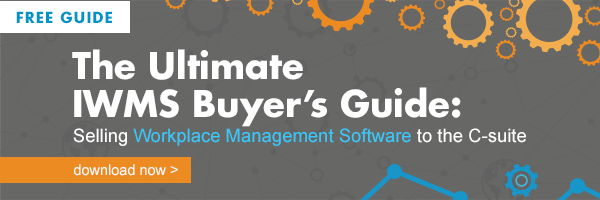11 Leadership Habits CEOs Should Break in 2016


Even if resolutions aren’t your cup of tea, it’s impossible to escape at least a little self-reflection in the first few months of the New Year. Most people focus on setting new goals, or acknowledging what they want to do more in the year to come. But what about the things we should be doing less? It’s human nature to form habits, but not all of them are good. Here are 11 bad leadership habits CEOs should make a point to break in 2016:
1. Excessive Multi-tasking
Did you know only about 2 percent of people are actually capable of successfully multi-tasking? As for the rest of us, multitasking can increase error rate by as much as 50 percent. If you’re the type of person who juggles several tasks at once, try trimming back and only focusing on a couple at a time to ensure each task receives your undivided attention and best effort. By setting this example, your employees will follow suit—and likely increase their own efficiency.
 2. Constantly “Plugging In”
2. Constantly “Plugging In”
The sophistication of mobile devices has turned us into email-checking, browser-searching, social media-monitoring fanatics. And according to Business Insider, each time you check email you lose 25 minutes of productive work time. Instead of reaching for your smartphone every time you hear a ding, designate time slots throughout the day to check email and catch up on notifications. Instead of instantly Googling questions that pop into your head, write them down and search them later.
3. Scheduling Too Many Meetings
According to an article in Entrepreneur, there are more than 3 billion meetings a year on which executives waste about 40 to 50 percent of their total working hours. And get this: Nearly 34 percent of those meetings end up being a complete waste of time—meaning the goal was not accomplished. This year, resolve to be more selective about which meetings you attend. Only accept invitations if the agenda is clear, a time limit is set and your presence is necessary to achieve the goal.
4. Checking Email First Thing In the Morning
Willpower is strongest at the start of the day (after you’ve had coffee, of course). When you check email first thing in the morning, you burn through some of that willpower before you even begin working through your actual to-do list.
Email is reactive, not proactive, and it’s more likely that you’ll receive a message that distracts you from your priorities than a perfectly timed “urgent” message that requires your immediate attention. Instead of spending your most productive hours sifting through your inbox, set to work on your most challenging tasks. When your willpower begins to fade, email is the perfect chore to keep you busy.
 5. Failing to Prioritize
5. Failing to Prioritize
Make prioritizing your day a regular routine. As stated above, you lose productivity as the day progresses, which means you should put your most taxing responsibilities at the start of your day. There’s no telling what fires you’ll face in the hours to come, and the longer you wait, the more you risk not getting to high-priority tasks at all. One way to prioritize your day is to create a to-do list the day before. You can also try scheduling time for each task on your calendar.
6. Avoiding ”The Trenches”
The trenches are where you grow general knowledge and expertise. It’s where you learn about your employees and the deep interconnections that drive your enterprise forward. It’s also where you build empathy. If you want to lead a team, you must understand what the team consists of, and how it operates. In your case, that means familiarizing yourself with the ins and outs of each department, and understanding the pain points of your employees. It also means working alongside your employees rather than observing them from an ivory tower.
7. Sitting For Too Long
Sitting for extended periods of time is not healthy for your body or your mental focus. The ideal solution is an adjustable height desk that conforms to both sitting and standing. The alternative is taking frequent breaks to stretch and walk around every 20 or 30 minutes. The latest recommendation is that you should spend two to four total hours on your feet at work each day.
8. Hitting the Snooze Button
We’re all guilty of starting some mornings off with the snooze button. But if it’s a gesture you practice habitually, the problem could be that you’re not getting enough sleep. And sleep will absolutely impact your ability to lead. Set a bedtime and stick to it. Prepare for your morning by presetting your coffee maker, ironing and laying out clothes and committing your morning work agenda to memory. Side note: You’re going to need to try and break the nighttime Netflix addiction and refrain from looking at your phone in bed if you want to successfully train your mind to enter sleep mode when you want it to.
 9. Forgetting to Make Time to Think
9. Forgetting to Make Time to Think
Business environments are downright hectic and it’s easy to get carried away. But power-housing through your responsibilities may not be the best approach. Like your body, your mind also needs frequent breaks to recharge. In fact, taking just one micro break (anywhere between 30 seconds and 5 minutes) can improve mental acuity by an average of 13 percent. And a 15-second mental break can reduce fatigue by 50 percent.
Set an alarm to remind yourself to take a break each hour. Breaks are best when taken before they’re actually needed. During your break, stand and stretch, gaze blankly ahead for 20 seconds or close your eyes and rest. Two minutes of mental rest seems to be the sweet spot.
10. Not Planning Enough, or Planning Too Much
Plan too much and you leave no room for the unexpected—which can completely derail your day. Plan too little and you risk unnecessary time waste. The key is to set realistic goals and map a reasonable pathway to those goals while leaving space to deal with unforeseeable events. There should always be a little padding built into your schedule to allow for changes.
11. Fearing Technology
Some business leaders talk about technology like it’s a necessary evil. But in truth, technology is one of your organization’s greatest assets, and this isn’t going to change—ever. Workplace software, tools and applications exist to make your job easier, and with the right support, they can help you realize your full potential as well as the total potential of your workforce. Instead of turning a cold shoulder to IT, take a more welcoming approach and genuinely try to utilize the tools at your disposal. The impact of technology on your efficiency may surprise you.
Ask the most successful CEOs what they do regularly to perform as well as they do, and you won’t likely find any of these bad habits in their routine. By committing to tackling one of these habits at a time, and being mindful of how each broken habit impacts your productivity, 2016 will be your best year yet.
Looking to boost productivity in 2016? Check out our free eBook, The Ultimate IWMS Buyer’s Guide to discover how to transform your workplace through technology.
